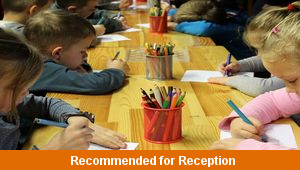Lesson Four – Sing a Song of Sixpence

This literacy teaching pack for the Foundation Stage gets the children to investigate and change some of the different word rhymes and special vocabulary words that feature in a traditional nursery rhyme with a narrative story.
The class can record and match different pairs of cvc words that end in the same final phoneme sounds when building word lists.
Download this teaching pack including a lesson plan, classroom activities and an interactive presentation to investigate and change some of the different word rhymes and special vocabulary words that feature in a traditional nursery rhyme with a narrative story
Activities in this teaching pack include a shared reading text to describe the structure and composition of a nursery rhyme, worksheets to build a range of different words by adding letters of the alphabet to complete cvc words and a set of cards to select and record illustrations for words with the same final phoneme sounds.
The interactive presentation gets the children to explore how to change some of the different rhymes and words that feature in a traditional nursery rhyme.
This lesson is part of a literacy scheme of work to get the children to investigate the use of patterned language and rhyming in traditional nursery rhymes and practise segmenting words into individual phonemes by reading and adapting poetry. There are teaching activities for shared learning, differentiated worksheets to support independent learning and interactive presentations to introduce concepts and key skills.
-

Halving Things
Explain and model how to find and record the halves of some of the different objects that can be used at home and in school
-

School Friends
Identify and learn classroom routines and organisation by exploring and describing information and likes and dislikes for each of their classmates
-

Classroom
Identify the location and function of different objects used in the classroom and explore how to formulate rules to manage the classroom safely
-

Shape Patterns
Identify, describe and compare the sequences of geometric shapes that have been used to create a range of different patterns
